Hanover Bald Eagle Blog # 14 - 2021
April 5, 2021
In partnership with Comcast Business and Pennsylvania Game Commission .
Earlier this season, we took a look at the cold hardiness of bald eagles and marveled at their ability to stay warm. As we learned, bald eagles efficiently trap heat due to their insulating feathers and their surface area to volume ratio. We learned that they avoid cold weather and pesky elements by constructing their nest in protected places, using strategic roosts in the winter, and reducing their activity levels to save energy.
The summer is a whole different ball game.
This week we witnessed all three Hanover eagles engaged in what looked suspiciously like panting. In birds, we call this behavior “gular fluttering,” so named because the area of skin on a bird’s neck is called the gular and they flutter this skin to dissipate heat. Birds do not possess sweat glands, so they must use other tricks to stay cool.
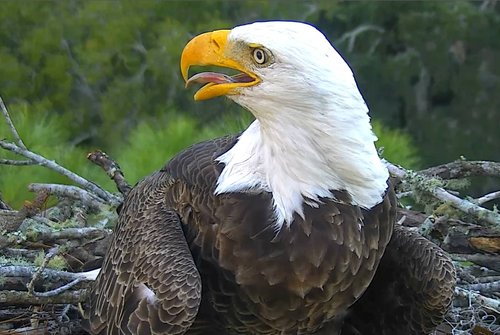
In the above photo, one of the eagles from the NEFL nest is seen panting to cool off from the heat.
Birds and mammals are endotherms, meaning they produce their own body heat. Fish, amphibians, reptiles and insects are all ectotherms, meaning they gain and lose heat through the environment (think of a lizard or snake sunning itself on a warm rock before nightfall, soaking up every bit of heat possible before sunset).
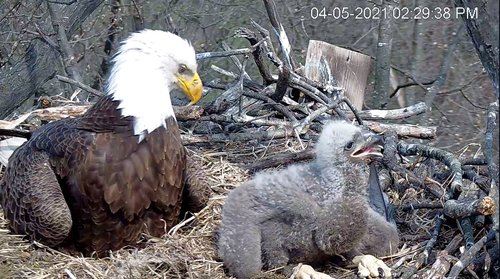
The Hanover Eaglet at 3 weeks starting to pant in the spring sun.
Most raptors have a core temperature of 40 °C (104-105°F). Small raptors maintain a slightly higher temperature than larger raptors, because their metabolism is higher. Research shows that these “high- flight-speed” raptors, such as falcons, have a higher resting metabolic rate compared to “low-flight-speed” raptors such as vultures or eagles. Smaller, fast-paced raptors also have hearts and flight muscles that are nearly twice as large as bigger, slower-moving raptors in relation to overall body mass! All of this means that smaller raptors create and dissipate heat more rapidly than their larger cousins.
In addition to gular fluttering, the Hanover eagles cool off by simply altering their posture. They shift their body away from the sun to ensure that as small of an area as possible receives direct sunlight. The Hanover nestling can now regulate their own body temperature without parental help, but when they were fresh out of the egg the on-duty parent would sometimes shade the little one by providing a sun umbrella with their wings.
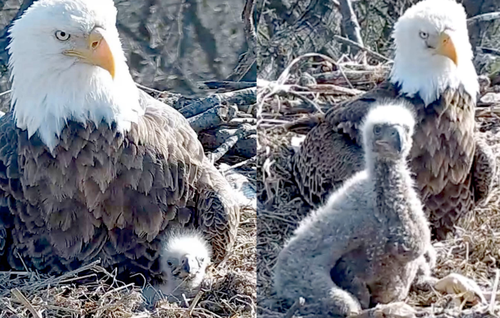
What a difference just a few weeks can make! On the left is a photo from the eaglet at 1 week old, on the right the Hanover eaglet is 3 weeks old!
Just as birds will fluff up their feathers to create an insulating pocket of air on cold days, they will do the opposite on hot days and essentially de-fluff to prevent that same pocket of air from forming at all. They also reduce their activity and keep unfeathered body parts such as the beak, talons, and legs exposed on hot days to allow for heat dissipation.
By this point the nestling has already developed their second set of down feathers, and is just on the cusp of developing their very first contour feathers (a fancy word for body feathers). As we can see, they are growing very quickly, putting on roughly a half pound to a pound of weight each week, depending on whether they are a he or a she. This rapid growth will begin to slow down at nine weeks of age.
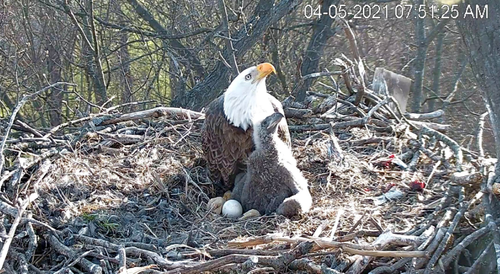
The nestling is just over three weeks old, which means their beak is nearly adult size, and they are about one foot tall when standing up straight! Every day they become more in tune with their giant feet and adorably stubby wings and before we know it, this medium-sized nestling will be a confident teenager strutting around the nest and testing boundaries. It’s only a matter of time.
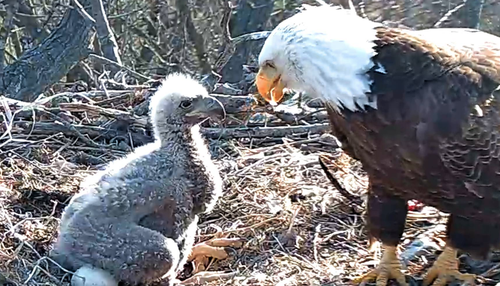
SOURCES
Bald Eaglets. (2020). American Eagle Foundation. Retrieved March 3, 2020 from https://www.usask.ca/biology/bortolotti/pubs/wb96-4-524-542.pdf.
Bildstein, Keith. (2017). Raptors: The Curious Nature of Diurnal Birds of Prey. Cornell University Press.
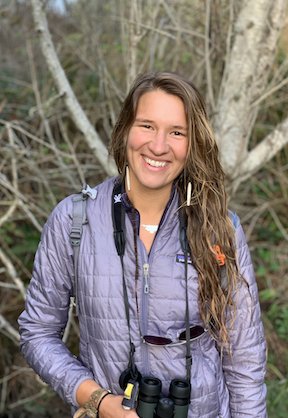
RAPTOR ECOLOGY SPECIALIST - ZOEY GREENBERG
RETURN TO HANOVER BALD EAGLE BLOGS
WATCH THE HANOVER BALD EAGLE LIVE CAMS
For over 20 years, HDOnTap has provided live streaming solutions to resorts, amusement parks, wildlife refuges and more. In addition to maintaining a network of over 400 live webcams, HDOnTap specializes in design and installation of remote, off-grid and otherwise challenging live streaming solutions. Contact press@hdontap.com for all media needs, including images and recordings.